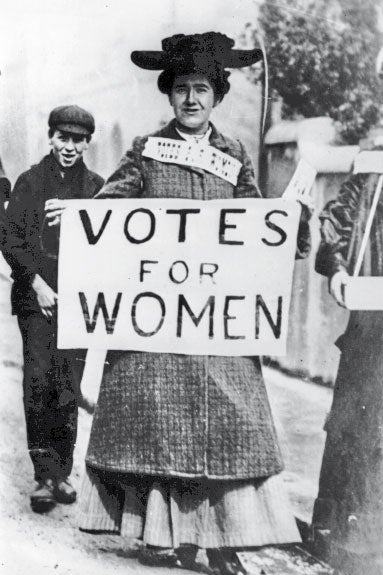
Your support helps us to tell the story
From reproductive rights to climate change to Big Tech, The Independent is on the ground when the story is developing. Whether it's investigating the financials of Elon Musk's pro-Trump PAC or producing our latest documentary, 'The A Word', which shines a light on the American women fighting for reproductive rights, we know how important it is to parse out the facts from the messaging.
At such a critical moment in US history, we need reporters on the ground. Your donation allows us to keep sending journalists to speak to both sides of the story.
The Independent is trusted by Americans across the entire political spectrum. And unlike many other quality news outlets, we choose not to lock Americans out of our reporting and analysis with paywalls. We believe quality journalism should be available to everyone, paid for by those who can afford it.
Your support makes all the difference.The Women’s Library is generally acknowledged to be the greatest collection of items relating to women’s history in Britain, if not Europe.
Television historian Michael Wood goes further and calls it the greatest collection in the world. For most quite how many of the most famous and significant artefacts of the women’s movement are housed (ironically enough) in a converted washhouse, in an unfashionable street in the East End, comes as a surprise.
This exhibition’s opening coincides with the announcement of the Library’s rescue, thanks to the LSE, from imminent closure (although the building will be lost). The Long March to Equality: Treasures of The Women’s Library not only aims to tell the story of the British Women’s movement via the library’s collections but to showcase the extent and the importance of the archives. This is the Women’s Library flaunting its wares. It is hard not to be impressed by what’s on offer. A vindication of the rights of the Women’s Library.
Among the more famous items are the John Odie engraving of Mary Wollstonecraft; the first petition for women’s suffrage, 1866 (high-profile signatories include Florence Nightingale, Harriet Martineau and Elizabeth Barrett Browning); and the return railway ticket that was found among Emily Davison’s effects after she was killed throwing herself in front of the King’s Horse – an item which suggests that martyrdom may not have been her intention.
Alongside these come more off-beat items with their own understated and quiet power: a handwritten poster roughly hewn from a flipboard advertising an early Women’s Refuge; a battered brown bag belonging to Millicent Garrett Fawcett; an interview with Lady Beatrice Ricardo about her first-hand recollections of Emmeline Pankhurst. Physical exhibits are interspersed by audio-readings from celebrity supporters of the Women’s Library including Sandi Toksvig, Sophie Dahl and Bill Nighy.
The wit of the women’s movement is an insistent leitmotif – postcards with quips from the late nineteenth century to the present day make regular appearances. The exhibition, one feels, takes proving feminists have a sense of humour too seriously.
The danger of such a broad-sweeping exhibition is that the narrative can start to feel dangerously simplified, especially when framed by such a whiggish framework as ‘The Long March to Equality.’ The lack of economic parity, exacerbated by the current economic climate, reminds us that equality is as elusive as it ever was
‘The Long March to Equality’, The Women’s Library, London E1 (londonmet.ac.uk/thewomenslibrary) until 22 February 2013.
Join our commenting forum
Join thought-provoking conversations, follow other Independent readers and see their replies
Comments